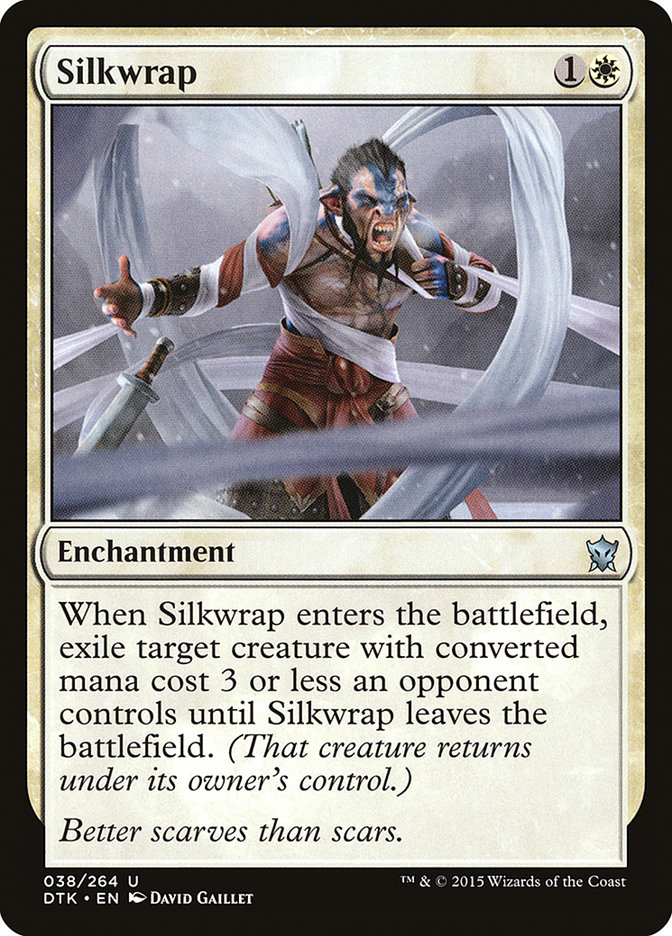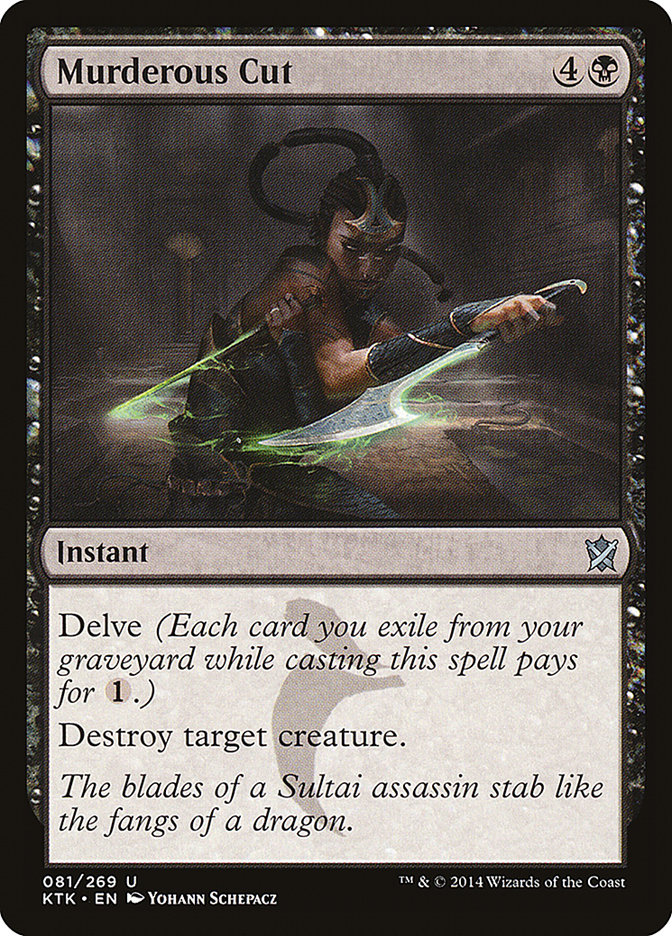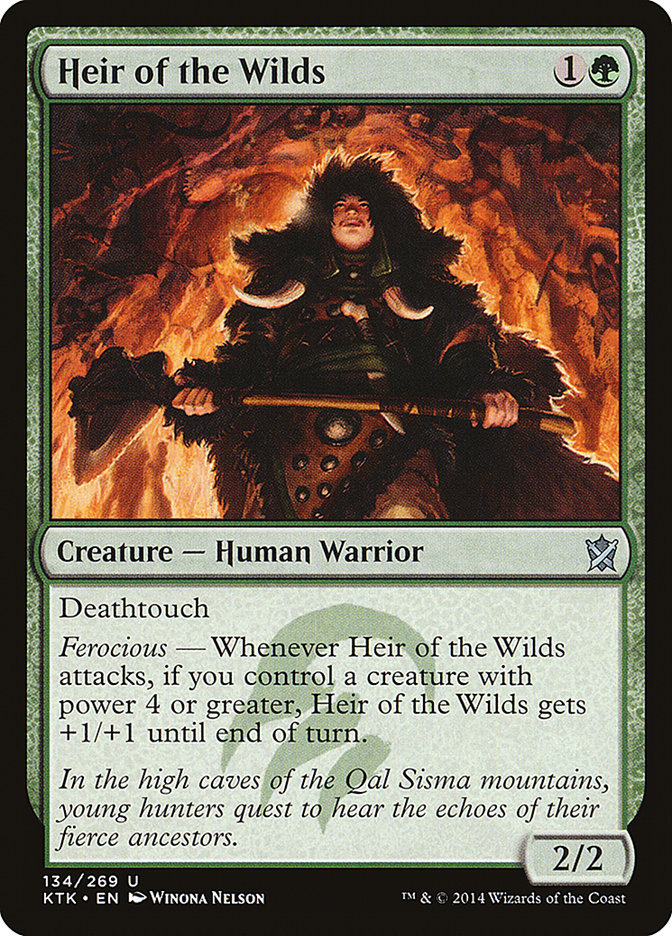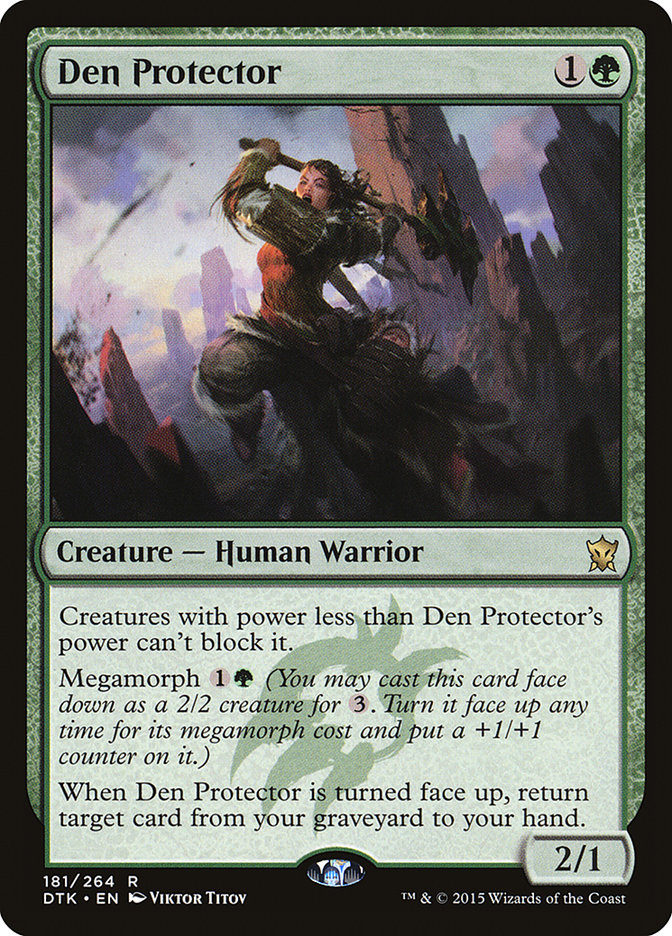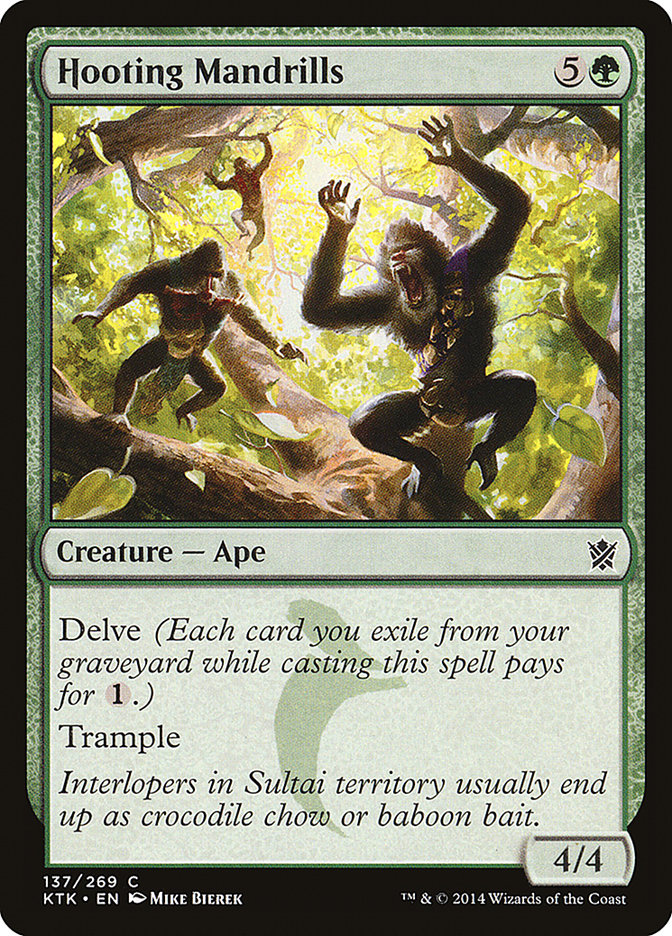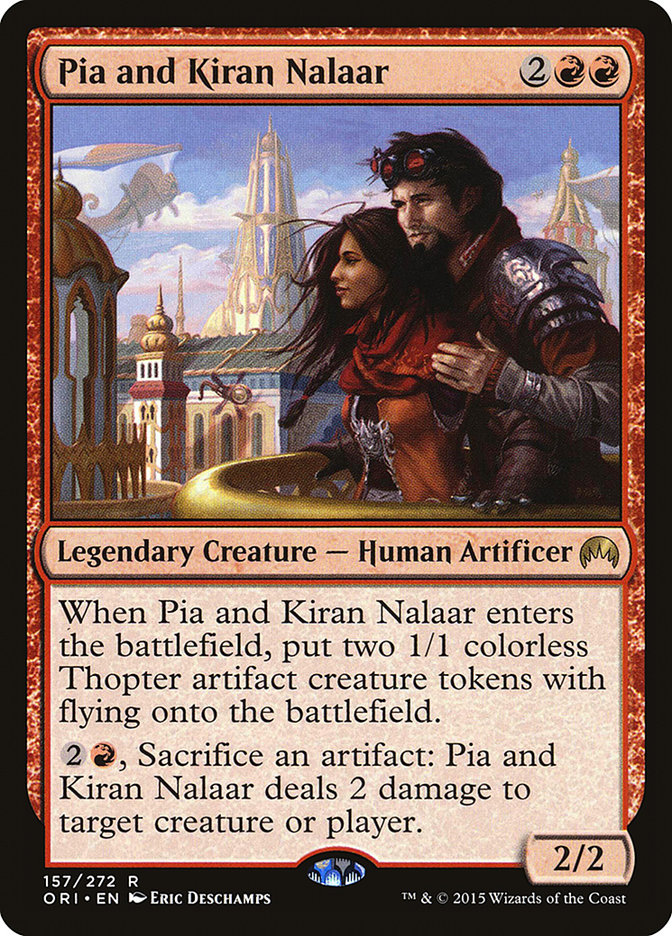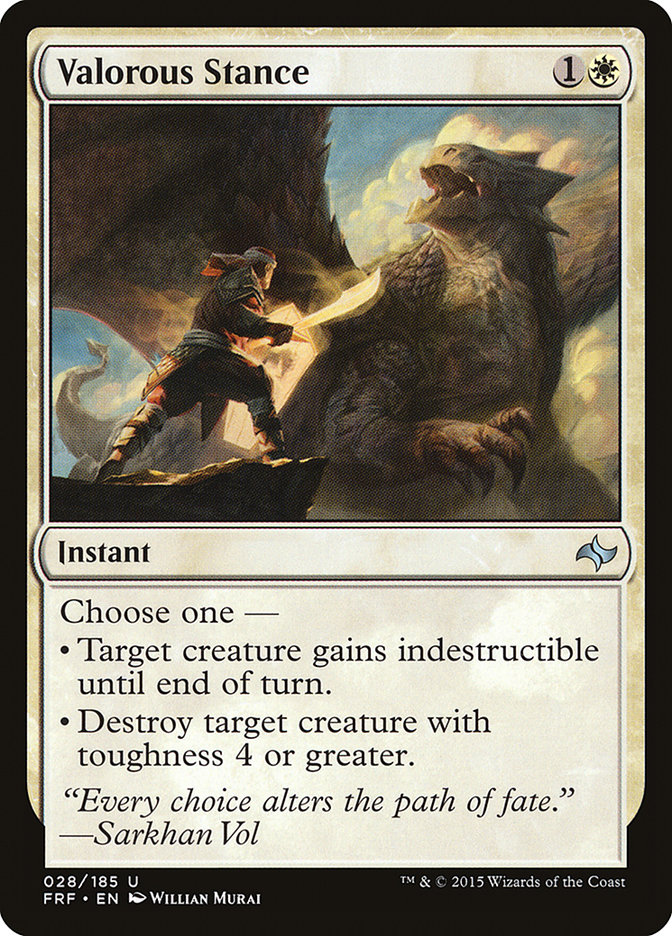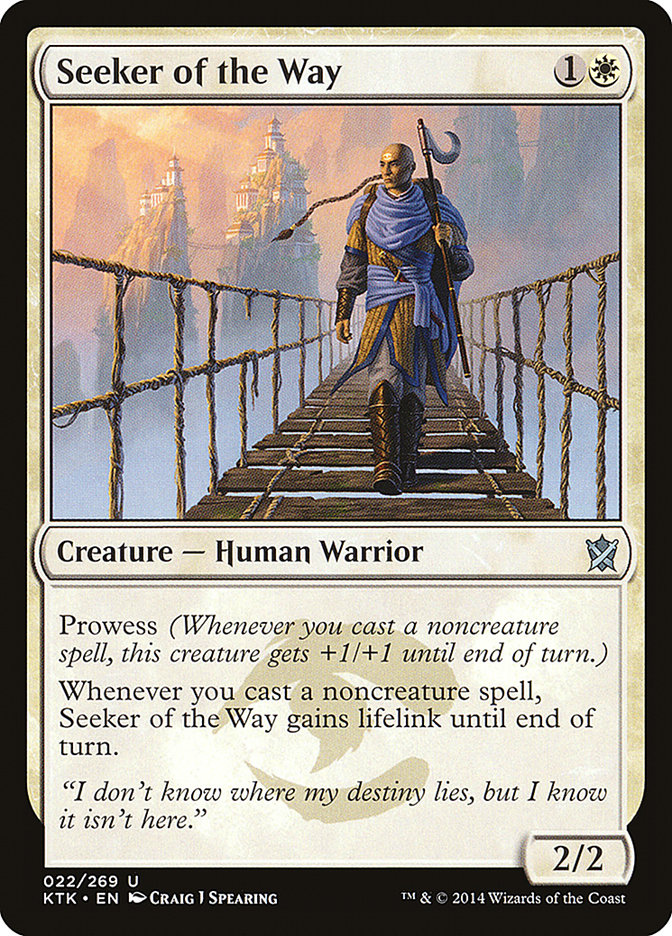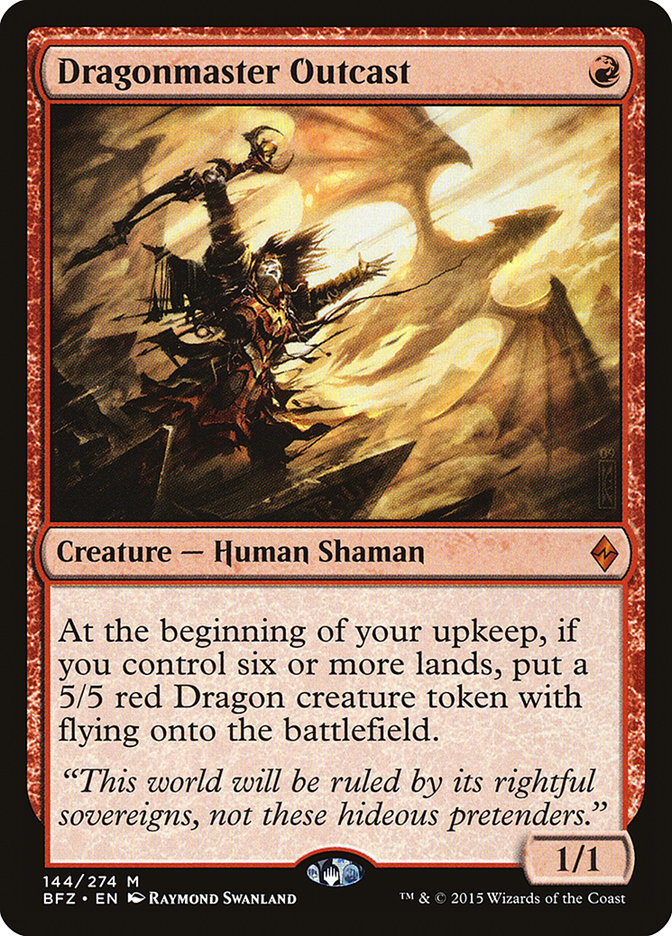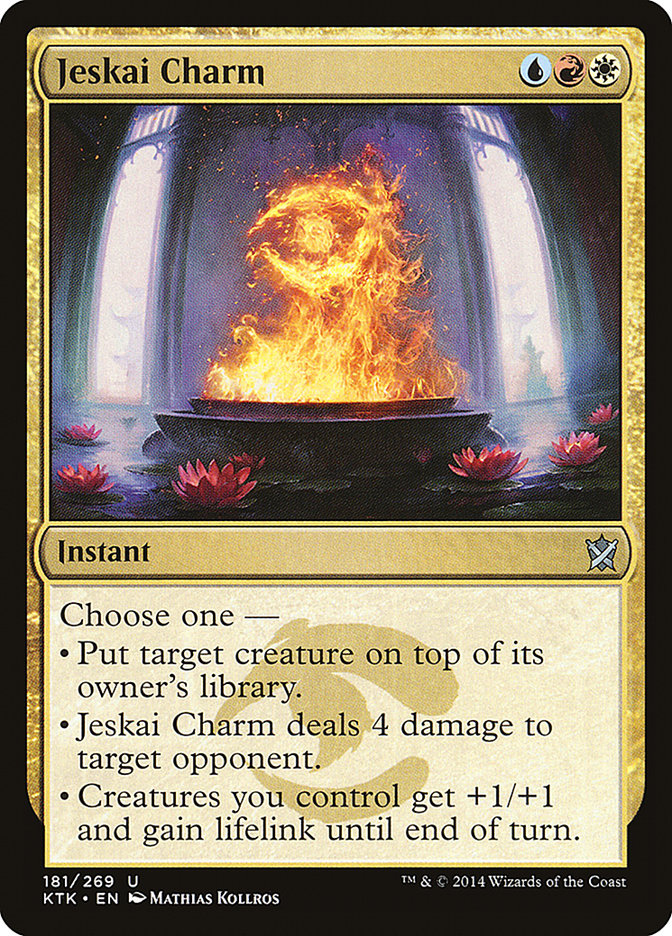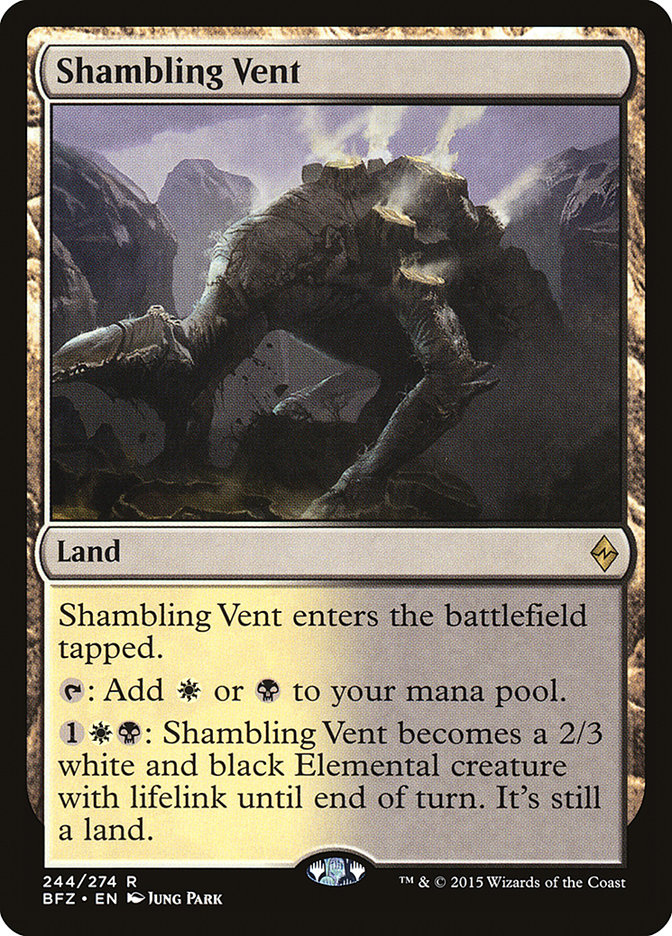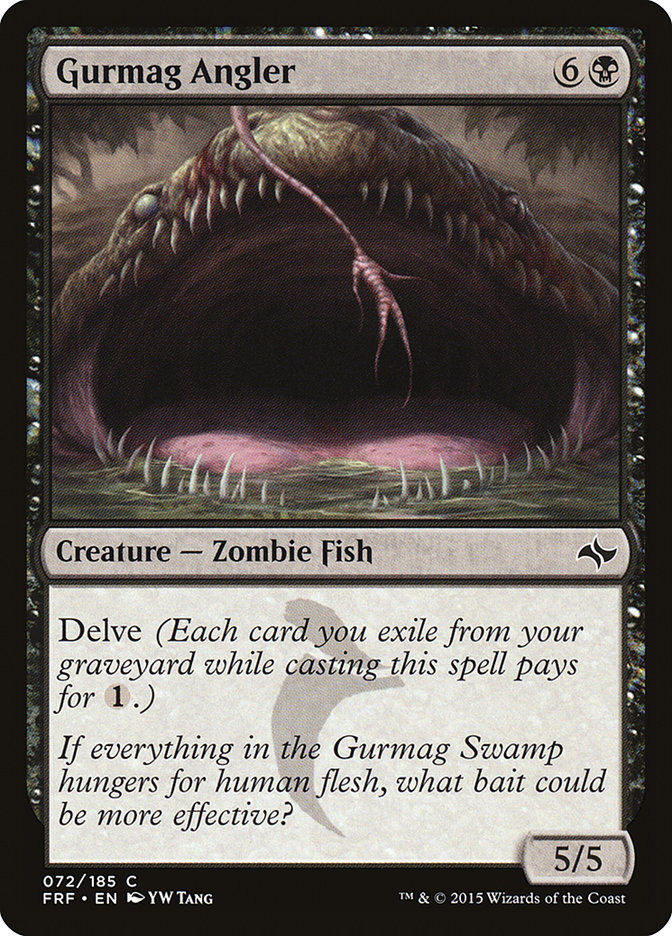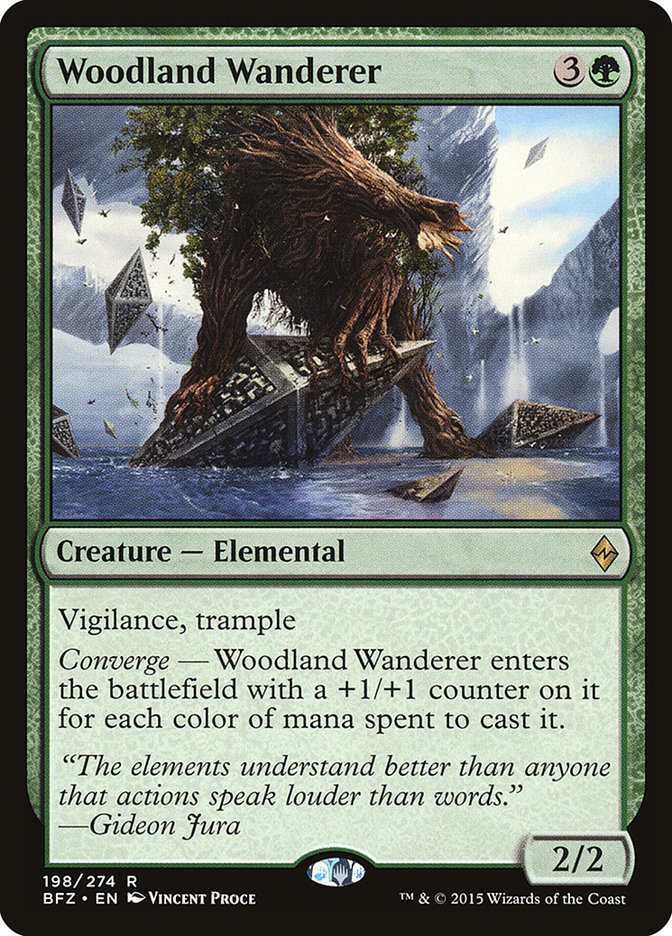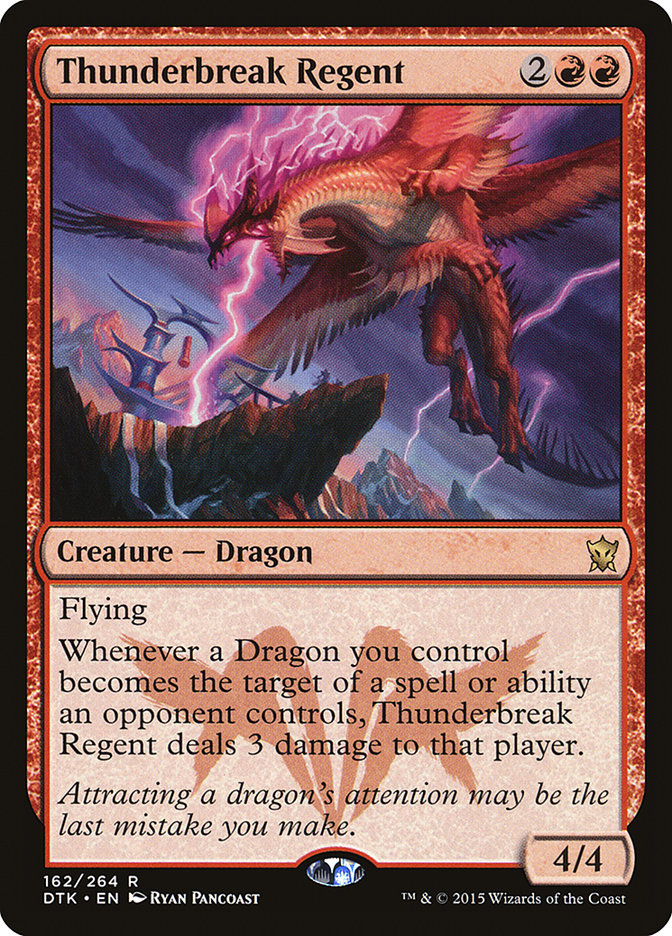Abzan was the most popular deck, again…
…but actually didn’t win this time?
The return of red aggro came true, just as the prophecy foretold?
Jeskai Black began its return to glory?
This weekend’s open in Denver was a case study in some of the most predictable trends in recent memory. While Abzan Aggro has splintered into three breeds, they are close enough to the same archetype to be reasonably merged.
● Abzan Aggro 67%
● Abzan Red 21%
● Abzan Blue 12%
The continued popularity of Abzan combined with the recent disappearance of Jeskai Black was predicted to lead to a resurgence of red aggro. Monastery Swiftspear and friends did not disappoint, with Atarka Red, R/G Landfall, and Mono-Red combining to make up nearly a fifth of the Day 2 metagame. The state of the metagame is largely built around these two decks (of which red aggro typically has the advantage over most Abzan, i.e no red).
Here’s a breakdown of the day 2 metagame at #SCGDEN:
|
Archetype |
Day 2 Metagame Breakdown |
|
Abzan |
24.2% |
|
Red Aggro |
19.2% |
|
Jeskai Black |
12.1% |
|
Esper |
8.1% |
|
8.1% |
|
|
G/X Eldrazi Ramp |
6.1% |
|
Mardu |
4.0% |
|
B/W Warriors |
3.0% |
|
G/W/X Megamorph |
3.0% |
|
Esper Tokens |
2.0% |
|
Jund |
2.0% |
|
Misc |
7.1% |
As always, Abzan Aggro underperformed on day 2, putting just a single copy into the top 8. Of course, that’s not totally fair, given that three more showed up 9th-16th.
Unlike most weeks (recently), Abzan didn’t end up taking the trophy. Nevertheless, the first deck in every Standard gauntlet should be Abzan. The highest finishing Abzan player on the weekend, Logan Mize, used a very standard build perfect for preparation.
Creatures (20)
- 3 Heir of the Wilds
- 4 Anafenza, the Foremost
- 2 Wingmate Roc
- 4 Siege Rhino
- 4 Warden of the First Tree
- 3 Den Protector
Planeswalkers (4)
Lands (26)
Spells (10)

The use of two Silkwraps and two Murderous Cuts helps provide much-needed Jace, Vryn’s Prodigy-defense. Nevertheless, it’s not ideal to have to rely on such narrow removal against control decks that might have few, if any, other targets.
However, Logan has a very potent and proactive anti-Jace plan after sideboarding. He can sideboard in the full playset of Pitiless Horde and wipe some smiles off of faces.
It’s not just that Pitiless Horde is a five-power haste creature. The continual bouncing back to your hand lets you dodge Jace’s +1 ability, not to mention the prospect of avoiding Planar Outburst, Languish, Ruinous Path, Silkwrap, and the like. Just watch out for Ojutai’s Command!
It’s nothing new, but Heir of the Wilds and Den Protector continue to be superior to Hangarback Walker. The format is a bit hostile for the Walker, and Abzan can’t afford the tempo-loss.
What’s good against Abzan?
Creatures (16)
- 4 Monastery Swiftspear
- 1 Lightning Berserker
- 3 Zurgo Bellstriker
- 4 Abbot of Keral Keep
- 4 Makindi Sliderunner
Lands (21)
Spells (23)

Lee’s build of Atarka is very standard, with the biggest “twist” being the use of a full playset of Makindi Sliderunner instead of Hordeling Outburst, Goblin Heelcutter, Chandra, Fire of Kaladesh, Fiery Impulse, or extra Lightning Berserkers.
With just 21 land, Lee’s under no illusions of consistently pumping the Sliderunner, but it’s more than just a 2/1. Become Immense and Titan’s Strength sometimes just need a single trampler to punch through the final points of damage.
What I love about Lee’s build is the use of Hooting Mandrills and Pia and Kiran Nalaar along with Chandra out of the sideboard in order to diversify the threat base. We want to have more threats to bring in for when we need to reduce the “pumps,” and I love that this split gives us some “go tall” and some “go wide” without getting us too glutted at the four spot on the curve. Remember, Hooting Mandrills has trample, too, so all the same pump-tricks work on it.
While red aggro was the biggest gainer on the weekend, it’s Jeskai Black that I’m really excited about (particularly since it has such a good red aggro matchup). Luis Scott-Vargas and I were talking before this weekend about the prospect of playing a Jeskai Black deck with Monastery Mentor maindeck, and sure enough, the top finishing Jeskai Black deck of the weekend had two Mentors main.
Creatures (13)
Lands (24)
Spells (23)

Maybe I’m just greedy, but I love the use of two Dig Through Times and three Treasure Cruises. Tasigur is great, but playing a ton of card draw really helps fuel Monastery Mentor.
Valorous Stance makes for a nice touch with Mentor, as it’s Rhino insurance that doubles as Mentor life-insurance.
Seeker of the Way over Soulfire Grand Master is interesting. It’s sacrificing some lategame power for short-term advantage. It does make a lot of sense when you consider Monastery Mentor and blue delve cards to be your lategame. Besides, it is just kind of sweet to be able to protect your Seeker from an opposing Fiery Impulse or Kolaghan’s Command.
I like the move of Dragonmaster Outcast to the sideboard. It fits the general, minor theme of being less vulnerable to Fiery Impulse and Kolaghan’s Command. Besides, Monastery Mentor and blue delve cards really are a much stronger endgame than previous Jeskai Black decks were playing.
Another very exotic build of Jeskai Black top 8’ed the event in the capable hands of Todd Anderson.
Creatures (9)
Lands (26)
Spells (25)
- 2 Duress
- 4 Crackling Doom
- 2 Utter End
- 2 Murderous Cut
- 2 Treasure Cruise
- 3 Ojutai's Command
- 2 Roast
- 2 Kolaghan's Command
- 4 Fiery Impulse
- 2 Painful Truths
Sideboard

With two Painful Truths, two Treasure Cruise, five Commands, four Soulfire Grand Masters, and four Jace, this build is long on card draw. It’s also long on removal with multiple Roast (mondo-combo with Soulfire Grand Master!), multiple Murderous Cut, and multiple Utter End, not to mention multiple Duress and multiple Shambling Vents.
How does he have all this room?!
I guess that’s what happens when you play zero Mantis Rider and zero Tasigur, the Golden Fang…?
I like some of what’s going on in each and kind of want to try a hybrid (with a bigger Mentor theme, of course).
Creatures (12)
Lands (26)
Spells (22)
- 2 Duress
- 1 Dispel
- 4 Crackling Doom
- 1 Utter End
- 1 Murderous Cut
- 1 Jeskai Charm
- 3 Treasure Cruise
- 2 Ojutai's Command
- 1 Roast
- 4 Fiery Impulse
- 2 Painful Truths
Sideboard

I love the idea of playing three Treasure Cruise and two Painful Truths (a card that is going to keep seeing more and more play in a lot of formats), along with lots of cheap interaction to fuel Monastery Mentor.
Luis says always play at least one Jeskai Charm in these kinds of decks. I’m into it. Monastery Mentor plus Jeskai Charm is a filthy combo anyway. If you don’t kill them, you’re still probably up an absurd amount of life.
I love Todd’s Shambling Vent manabase once you adopt the Painful Truths lifestyle. A little bit of lifegain goes a long way.
As excited as I am for Monastery Mentor in Jeskai Black, it was a different Monastery Mentor deck that took home the trophy.
Creatures (14)
Planeswalkers (6)
Lands (25)
Spells (15)

Vikram’s Esper tokens deck is very much a control deck with only a light token theme. Really, Monastery Mentor and Gideon are just about the only token-makers aside from a single Sorin. The deck’s actually just a bit more proactive of an Esper deck, leaning into the Mentors.
I love the four maindeck Duress! That is the sign of a mage that means business! Not only does it work great with Monastery Mentor, it can make sure the coast is clear for Dragonlord Ojutai to get in there (including potentially nabbing a Crackling Doom or Ojutai’s Command before the Dragonlord even comes down).
One last deck from the Open I wanted to take a look at was Stephen Garcia’s innovative Grixis Green deck that he piloted to a 52nd place finish. It may share the same four colors as Josh McClain and Brian Kibler’s Temur Black deck (i.e, not white), and they may both use Savage Knuckleblade, Tasigur, the Golden Fang, and Stubborn Denial. However, there was a fork in the road and Garcia broke a very different direction:
While McClain and Kibler played a Temur deck splashing black for Tasigur, the Golden Fang and Murderous Cut, this list is nearly pure Grixis. The only splash is a light touch of green for Savage Knuckleblade and Lumbering Falls.
It’s kind of funny listing “adding Jace” as a “new” feature, but it really does highlight the difference in philosophy between Garcia’s deck and the McClain/Kibler deck. For reference, here’s their build:
Creatures (20)
- 4 Rattleclaw Mystic
- 4 Savage Knuckleblade
- 2 Tasigur, the Golden Fang
- 2 Thunderbreak Regent
- 4 Woodland Wanderer
- 4 Snapping Gnarlid
Planeswalkers (2)
Lands (26)
Spells (12)

Snapping Gnarlid and Rattleclaw Mystic being replaced with Jace, Vryn’s Prodigy isn’t so much the difference between the decks, as it is a concise summary of the changes and the change in philosophy. McClain and Kibler played just twelve sorceries and instants, while Garcia had nearly twice as many (23).
It’s not just removal, making up the difference, either:
|
McClain/Kibler |
Garcia |
|
|
Removal |
9 |
12 |
|
Permission |
3 |
5 |
|
Discard |
0 |
3 |
|
Card Advantage |
0 |
3 |
Garcia’s spell suite is far more robust. Most removal and more permission is part of the picture, but he also has a discard package, not to mention card advantage from Kolaghan’s Command and Painful Truths. The addition of cards like Duress, as well as the ability to fill the graveyard quickly, makes Jace a natural fit.
Garcia also moves away from Woodland Wanderer and Thunderbreak Regent, fully embracing the black delve creature theme. Notice the use of thirteen fetchlands, in addition to the eighteen non-creature spells that cost two or less.
What I wonder, is if there is any way we can get away with cutting green?
Creatures (12)
Lands (25)
Spells (23)
- 2 Duress
- 1 Ultimate Price
- 2 Crater's Claws
- 1 Disdainful Stroke
- 4 Stubborn Denial
- 2 Roast
- 2 Kolaghan's Command
- 4 Fiery Impulse
- 2 Ruinous Path
- 1 Transgress the Mind
- 2 Painful Truths
Sideboard

The biggest “hole” created by the cutting of Savage Knuckleblade is how thin it leaves us at reliably turning on our Stubborn Denials. Thunderbreak Regent attempts to fill that void without going all-in on the Dragon theme. I am concerned, however, that there is just too much of a loss of power. Savage Knuckleblade’s activated abilities take on new meaning in a control deck, and the versatility, as well as ability to actually get bigger than Siege Rhino, Anafenza, and the like was important.
As for the land, yes, it is true that our mana is easier and more reliable, I actually think this represents a downgrade. With no creature-lands, no Mage-Ring Network, no Haven of the Spirit Dragon, and no Blighted lands, we’re looking at one of the least effective uses of lands in the format among decks this mana hungry.
Somewhat paradoxically, I’m actually up a land compared to the Grixis Green list above, as I just do not believe that deck is (or should be) a 24-land deck. In the end, I don’t love the look of the straight Grixis build. Not every experiment results in something worth breaking the mold for. Learning something is a success. Still, even if we’re going back to Grixis Green, we should get at least a 25th land in there.
Hell, I don’t know why we’re not looking to get a 26th land, too, while we’re at it. I would not hate ending up with a manabase a little closer to something like:
2 Mountain
1 Island
1 Swamp
1 Forest
The fourth Lumbering Falls is far from mandatory, and it’s very possible that the just playing three and running with 25 is correct.
Bonus decklist!
Creatures (4)
Planeswalkers (2)
Lands (27)
Spells (28)

I wonder about the possibility of yet another type of “Esper” control deck. Adrian Sullivan piloted his build of Demonic Pact Control to a record of 7-3 in Standard at #PTBFZ. Base U/B, with a white splash for Utter End (and Shambling Vent), nearly a quarter of the deck can reset or remove Demonic Pact.
4 Disperse
And this doesn’t even take into consideration how easily a flipped Jace can reset a Demonic Pact, nor the snowballing effect from all the extra cards once you start Pacting. Remember, if you win the game in the next three turns, you never have to “pay” anyway…

